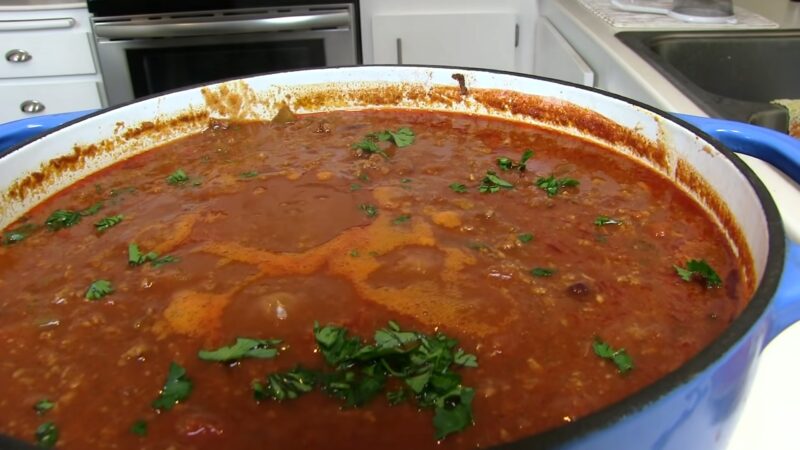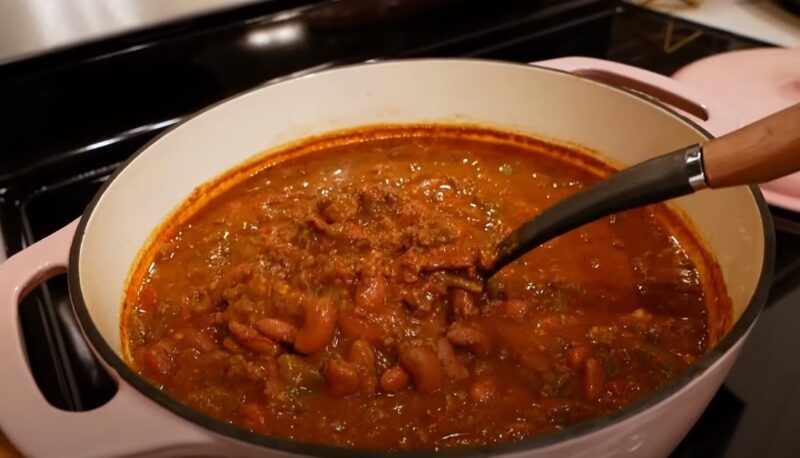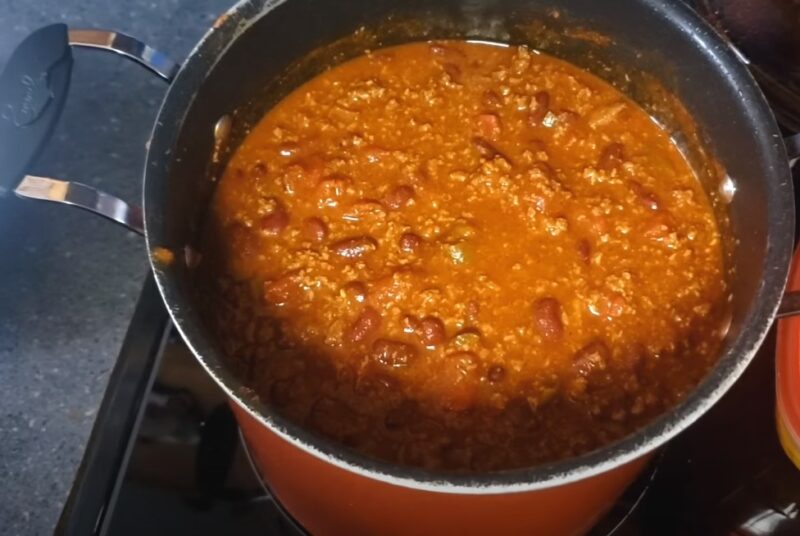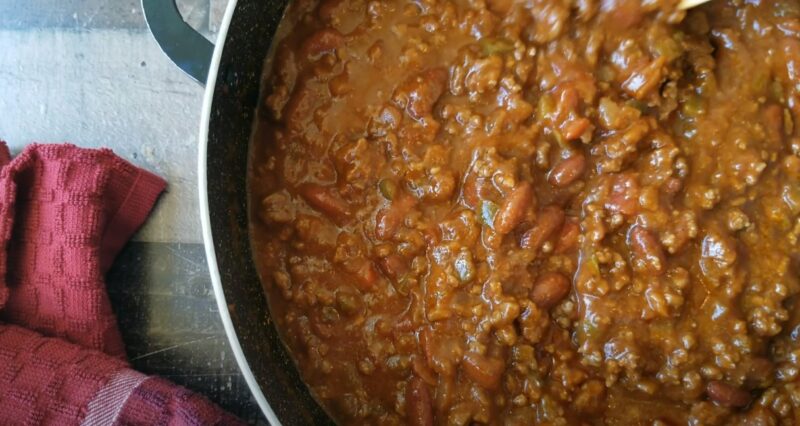When you whip up a batch of your favorite spicy stew, understanding how long it can safely stay in the refrigerator is crucial. This knowledge not only helps in planning meals but also ensures that you enjoy your dish without any health risks. The shelf life of such homemade dishes is not always straightforward, as it depends on various factors, from the ingredients used to the way it’s stored.
Quick Overview
| Storage Condition | Lifespan |
|---|---|
| In the Fridge | 3-4 Days |
| At Room Temperature | 2 Hours |
As you can see, a lower temperature can greatly impact the longevity of this dish. It is the only way to save the extra chili that is left, and enjoy it for a couple more days.
What Can Affect the Shelf Life?
The longevity of any homemade dish in the refrigerator is influenced by several key factors. Understanding these can help you ensure that your meals remain safe and delicious for as long as possible.
- Ingredients: The components of your recipe play a crucial role. Fresh vegetables and meats have different spoilage rates. For instance, dishes with a higher meat content may spoil quicker than those dominated by vegetables or beans. Similarly, the presence of dairy products can also affect how long the dish remains good.
- Preparation and Cooking: The way you prepare and cook your meal has a significant impact. Properly cooking meat to the recommended internal temperature is vital for killing harmful bacteria. Additionally, the duration and intensity of cooking can influence moisture content, which in turn affects spoilage rates.
- Cooling and Storage: How you cool and store your dish post-cooking is equally important. It’s essential to cool it quickly to prevent bacterial growth. Large quantities should be divided into smaller, shallow containers to speed up the cooling process. Once cooled, it should be transferred to the refrigerator promptly.
- pH Level: The acidity level in your dish can inhibit the growth of bacteria. Recipes with higher acidity, such as those including tomatoes, might last slightly longer due to their natural preservative qualities.
- Cross-Contamination: During preparation, storage, or serving, cross-contamination can occur, especially if you use the same utensils for different food items. This can introduce bacteria into your dish, reducing its shelf life. The best solution is to use a box with a seal that will prevent the mixture of aromas and ingredients.
How to Extend Chili’s Shelf Life?

As we already mentioned, the average time where you can safely consume the chili stored in a fridge is 3 days. However, there are potential mistakes that could reduce this time, but also things that will help you add a day or two. Here are the essential factors.
- Proper Storage: Use airtight containers for storage. This not only prevents the entry of bacteria but also avoids absorbing other odors from the fridge. Glass containers are often recommended as they don’t transfer any flavors and are easy to clean.
- Immediate Refrigeration: Don’t leave your dish out at room temperature for more than two hours. Bacteria grow rapidly between 40°F and 140°F, so it’s crucial to refrigerate promptly.
- Cool Before Refrigerating: Allow the dish to cool slightly before placing it in the fridge. However, avoid leaving it out for too long. Cooling it in a shallow dish can speed up the process.
- Avoid Cross-Contamination: Use clean utensils every time you serve or handle the dish. This prevents the introduction of new bacteria and keeps it fresh longer.
- Check Fridge Temperature: Ensure your refrigerator is at the right temperature, ideally below 40°F (4°C). This slows down bacterial growth significantly.
- Portioning: Consider dividing the dish into smaller portions before refrigerating. This not only helps it to cool down more quickly but also means you only reheat the amount you need, reducing the risk of spoilage.
- Reheat Safely: When reheating, ensure it reaches 165°F (74°C) to kill any bacteria that may have developed. Avoid reheating multiple times as this can degrade the quality and safety.
- Use Preservatives Wisely: If your recipe allows, ingredients like lemon juice or vinegar can act as natural preservatives due to their acidity.
What About the Safety?

Recognizing signs of spoilage is critical. These signs can include changes in color, texture, or smell. If the dish develops an off odor, a slimy texture, or visible mold, it’s best to discard it immediately. Consuming spoiled food can lead to foodborne illnesses, which can be severe.
Temperature plays a vital role in food safety. Bacteria grow rapidly between 40°F and 140°F, a range known as the ‘danger zone.’ It’s important to minimize the time your dish spends in this temperature range. Always refrigerate it within two hours of cooking or after it has been left out at room temperature.
Reheating is another crucial aspect. When you reheat, ensure the dish reaches an internal temperature of 165°F to kill any potential bacteria. However, repeatedly reheating the same portion can degrade its quality and safety. It’s advisable to only reheat the amount you plan to eat. Moreover, personal hygiene plays a significant role in food safety. Wash your hands thoroughly before and after handling food, and ensure that your cooking area and utensils are clean.
Creative Ways to Use Leftover Chili

If you find yourself with leftover chili, there are numerous creative ways to repurpose it into new and exciting meals. Transform it into a hearty filling for tacos or burritos, adding a rich and flavorful twist to these classic dishes. It also makes an excellent topping for baked potatoes or hot dogs, creating a comforting and satisfying meal.
For a unique twist, use it as a robust sauce for pasta or a savory layer in a lasagna, blending traditional Italian and Tex-Mex flavors. These ideas not only add variety to your meals but also ensure that no food goes to waste.
| Leftover Use | Description |
|---|---|
| Tacos/Burritos Filling | Use as a rich and flavorful filling for tacos or burritos. |
| Baked Potato Topping | Top baked potatoes with it for a comforting meal. |
| Hot Dog Topping | Enhance hot dogs with it as a hearty topping. |
| Pasta Sauce | Use as a robust sauce for a unique pasta dish. |
| Lasagna Layer | Incorporate into lasagna for a savory Tex-Mex twist. |
FAQs
Can I tell if chili is bad if it doesn’t have any visible mold?
Yes, even without visible mold, chili can go bad. Signs include a sour or off smell, a change in color, or a change in texture. If you’re in doubt, it’s safer to discard it.
Is it safe to eat chili that has been left out overnight?
No, it’s not safe. Food left at room temperature for more than two hours (one hour in hot weather) enters the ‘danger zone’ where bacteria can rapidly grow. Chili left out overnight should be discarded.
Can I freeze chili with dairy ingredients like cheese or sour cream?
Freezing chili with dairy ingredients can lead to texture changes, as dairy products don’t always freeze well. It’s better to add these ingredients fresh when you’re ready to eat the reheated chili.
Can I use chili as a base for other soups or stews?
Yes. Chili can be a great base for other soups or stews. You can thin it with broth or tomatoes and add additional ingredients like vegetables, grains, or different proteins to create a new dish.
Is it better to store chili in the fridge or freezer for long-term use?
For long-term storage, freezing is the better option. Chili can be frozen for up to 4-6 months. In the fridge, it only lasts for 3-4 days. When freezing, use airtight containers or freezer bags to prevent freezer burn.
Summary
Homemade chili can last 3-4 days in the fridge and should not be left at room temperature for more than 2 hours. Its shelf life is influenced by factors like ingredients, cooking methods, and storage practices. To extend its freshness, use airtight containers, refrigerate promptly, and avoid cross-contamination.

